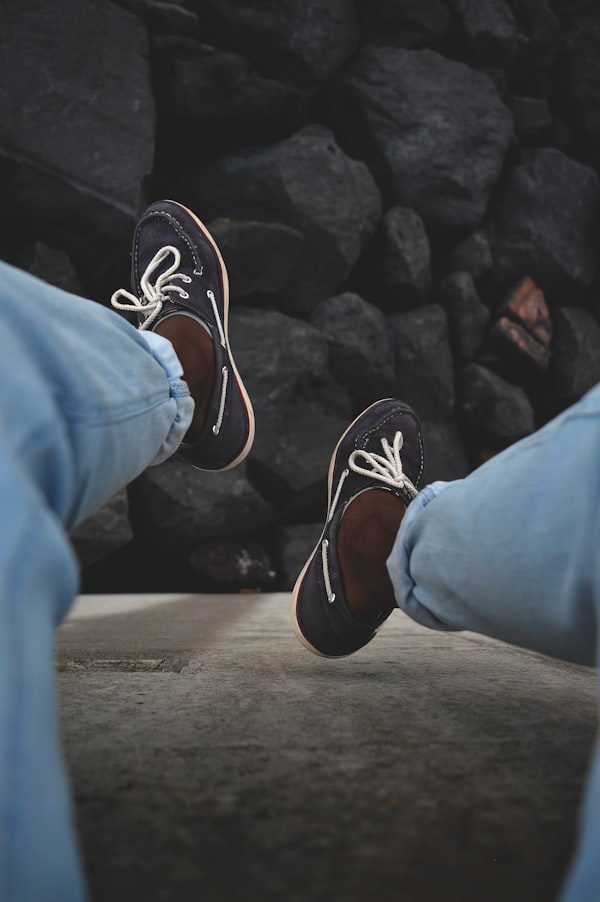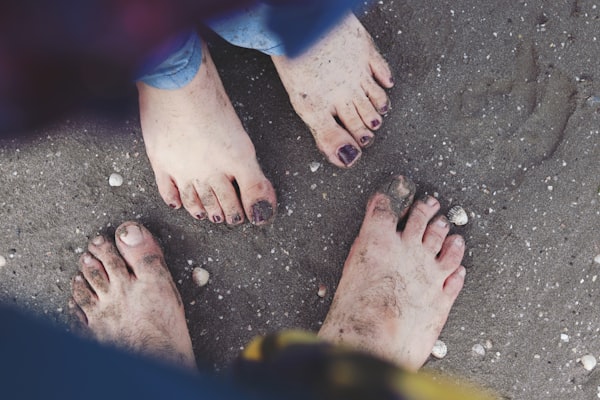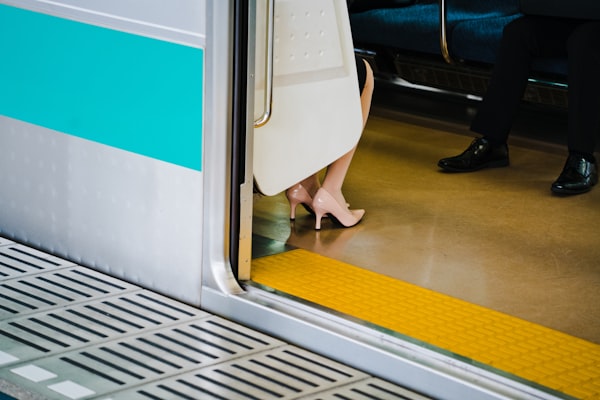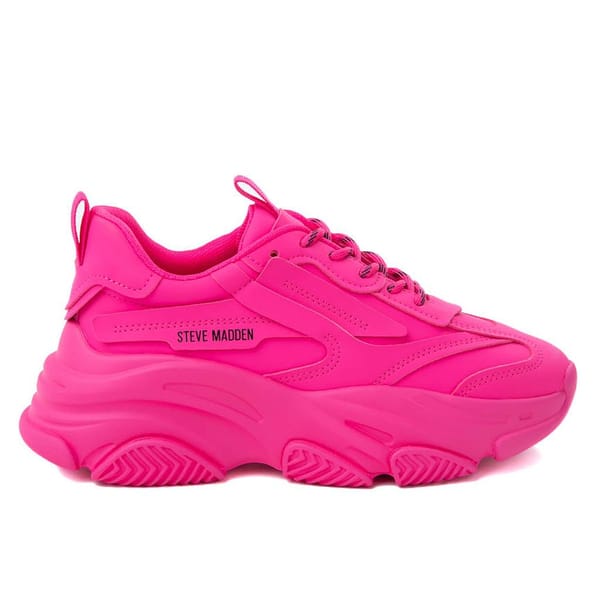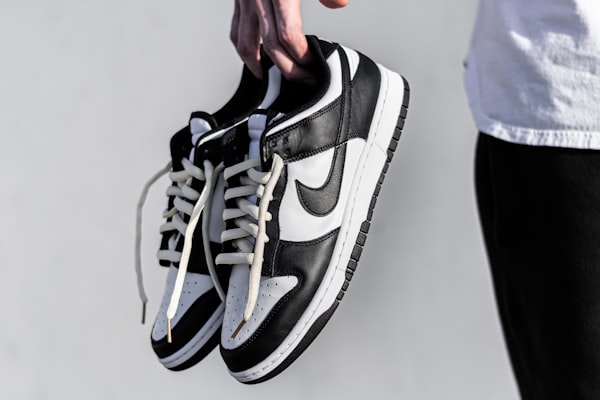Do you ever worry about slipping or falling in those new work shoes? Or, have a great pair of shoes you never wear because walking in them is like walking on ice?
I was so paranoid about slipping in my new shoes at a wedding that other guests thought I was doing a rendition of little kicks on the dance floor (an ode to Elaine’s dancing style in Seinfeld).
Aside from having your dance moves described as “a full-body dry heave set to music,” slips and falls can result in severe injury and are a common cause of workplace accidents. And, while the break from work sounds fantastic, being stuck at home in a cast or neck brace certainly does not.
What if I told you there were a few easy and inexpensive ways to avoid embarrassment and injury?
Whether you work in a hospital, restaurant, or factory or simply want to reduce the risk of slips and falls, keep reading to uncover valuable insight and guidance on how to make your shoes non-slip and improve safety in the workplace and on the dance floor.
What’s the Solution?
Smooth outsoles make shoes slippery by design (like dress shoes or sneakers) or by wear. This is because they do not have a rough or textured surface to provide traction on the ground.
This problem can be especially dangerous if you work in specific industries and are exposed to wet or slippery surfaces or uneven terrain regularly.
One solution is to use methods for making shoes non-slip. Using one of these methods, you can help ensure that your shoes are non-slip and that you are better protected against slips and falls at work and on the dancefloor.
Method 1: Scuff the Soles
One way to make your shoes more slip-resistant is by scuffing the soles. This involves roughing up the surface of the outsole, which can increase friction and improve the grip of your shoes.
You can scuff your soles using coarse-grit sandpaper (roughly 50-grit), a metal file, or a rough object like a brick, concrete, or gravel. This will create a more textured surface that can help to provide better traction on slippery surfaces.
Scuffing your soles is a simple and effective way to make your shoes more slip-resistant, and it can be especially useful if you don't have access to slip-resistant shoes or treatments. However, remember that scuffing your soles may also shorten the lifespan of your shoes, so it's crucial to weigh the benefits and drawbacks before deciding if this is the right solution for you.
Method 2: Treat with A Liquid Grip Product
Spraying your soles with a grip product can be an effective way to make them slip-resistant. These products are designed to create a rough surface on the bottom of your shoes that will help to increase traction and prevent slips and falls.
Before you use a grip spray, clean and dry your shoes thoroughly. Once clean, hold the can about six inches away from your soles and apply a light, even coat of the spray. Be sure to cover the entire surface of the soles, including the heels and toes. After you have applied the spray, allow it to dry completely before wearing your shoes.
It is essential to follow the instructions on the label of the grip spray you are using, as different products may have different application and drying times. Also, you may want to do this step outside to avoid damaging surfaces.
If you have supplies at home, there are a few alternatives to a store-bought spray. First, you can coat the soles of your shoes with a generous amount of hairspray. Follow the method above and allow to dry completely before wearing your shoes. This is a quick fix when you're headed out the door. The hairspray only needs a minute or two to dry, and many of us have it on hand.
If you have more time and want a more permanent DIY method, apply a salt and rubber glue mixture to the bottom of your shoes. Mix equal parts of rubber glue and salt in a disposable container to make the mixture. Again, follow the method above (but apply with a paintbrush or paint sponge) and allow to dry completely before wearing your shoes.
Method 3: Apply a Traction Enhancer
Grip pads are another option for making shoes slip-resistant, especially if the source of your slip problem is old, worn shoes. These small adhesive pads can be applied to the soles of your shoes to increase traction and prevent slips and falls.
To apply grip pads to your shoes, you should first clean and dry the soles of your shoes thoroughly. Then, remove the backing from the grip pads and press them firmly onto the soles, ensuring they are securely attached. Some grip pads may need to be trimmed to fit the shape of your shoes. Once the grip pads are in place, you can wear your shoes normally. It is essential to follow the instructions provided with your grip pads, as different products may have specific application and care instructions.
Grip pads can effectively make shoes slip-resistant, but they may need to be replaced periodically as they wear down over time.
For another DIY option, you can apply masking tape to the soles of your shoes. Adhere two strips of tape in an “X” pattern to the forefoot and midfoot sections of the sole and another to the heel section (if the heel is at least one-third of the sole). You may need to replace the tape each time you wear the shoes, as it will wear off. Be sure to do a quick check each time you wear the shoes.
Method 4: Replace the Soles
Replacing the soles of your shoes is another option for making them slip-resistant. This process can be more involved than using a grip spray or grip pads, but it can also provide more durable and long-lasting results.
There are a few different ways to replace the soles of your shoes, but one standard method is to use a shoe repair service. A shoe repair service is a professional service that specializes in fixing and maintaining shoes.
Friends and family are great resources for a good shoe repair service in your area. Or you can use a search engine, such as Google, to find shoe repair services in your area. Simply type "shoe repair service" followed by your city or zip code to get a list of options. Plus, online reviews can be valuable when finding the best shoe repair service to meet your needs.
To replace the soles of your shoes yourself, you must remove the old ones and attach new ones in their place. The new soles should be made of a material designed to provide good traction and prevent slips and falls. Some common options for slip-resistant soles include rubber, polyurethane, and other high-traction materials. Before replacing the soles of your shoes, be sure to research the options available and choose a suitable material for your needs.
Tips from Our Editors
- We don’t recommend the hot glue method. While the glue is “grippy,” it decreases the touch points between your shoe and the ground, making it unsafe. Also, it could damage the soles, especially those constructed of inexpensive rubber/foam-like materials.
- Never dry any solutions applied to soles with a hairdryer. It may compromise the solution used and the soles and could be flammable.
- Check your employer's dress code. Some jobs may require a specially certified non-slip brand of shoes.
- Always test modified shoes somewhere safe to ensure they perform as expected and don’t impact your gait.
On a Final Note
We’ve discussed several methods for making shoes non-slip. These include scuffing the soles, treating them with a liquid grip product, applying a traction enhancer like grip pads, and replacing them.
Each of these methods can effectively increase traction and prevent slips and falls but vary in cost, convenience, and durability. To find the best solution for your needs, it is vital to consider the specific requirements of your situation and choose a method appropriate for your shoes and the conditions in which you will be wearing them.
Regardless of which method you choose, ensuring your shoes are slip-resistant saves you from an embarrassing nickname and safeguards against slip and fall injuries in the workplace.
Related Articles






